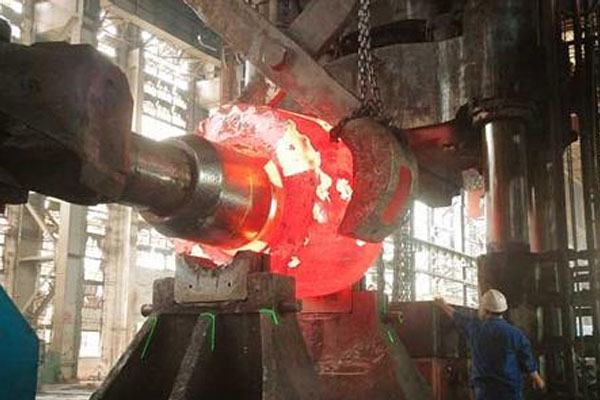1. Beryllium oxide: beryllium oxide not only loses a lot of steel, but also reduces the surface quality of the forgings and the service life of the forging die. If pressed into the metal, the forgings will be scrapped. Failure to remove beryllium oxide will affect the turning process.
2. Decarburization: Decarburization refers to the phenomenon that all or part of the carbon on the surface of steel is burned off. Decarburization makes the surface of the workpiece appear soft spots, reduce the surface hardness, wear resistance and fatigue strength.
3. Overheat and overburning: Overheat refers to the steel in the heating beyond the allowable temperature, so that the grain growth of coarse. Overheat is not conducive to heat treatment, so that the forgings become brittle and mechanical properties are reduced, but can be eliminated by normalizing or annealing after forging. Overburning refers to the phenomenon of oxides or partial melting of metals due to the heating time being too long and the temperature being too high. The fever cannot be remedied.
4. Stress: due to the difference between the inside and outside of the metal, the expansion is uneven, and the internal stress is produced, which is called thermal stress. The sequential change of metallographic structure caused by heating also causes stress, which is called microstructure stress. This will make the workpiece in the heating crack, cause the workpiece after the car processing crack and scrap.
5. Fracture in cross section: this defect destroys the chemical composition and microstructure uniformity of the steel, reduces the quenching hardness and deteriorates the mechanical properties. If the annealing temperature is too high and resulting in graphite section, it will not be easy to cut and quenching overheating and deformation. But if the annealing under heat or low temperature, pearlite can not complete globalization, is not conducive to cutting and subsequent heat treatment.
6. hard and brittle mesh carbide: it weakens the bonding force between the crystal material, the mechanical properties significantly worse, especially the impact toughness is reduced, but can be improved or eliminated by normalizing. If there is banded carbide, it will make the hardness and structure of quenching and tempering uneven, and easy to deformation, which is also a defect of banded structure of pearlite and ferrite along the direction of processing deformation. At the same time, it will also reduce the plasticity and toughness of the steel, so that the machining size is not stable, rapid tool wear.
Post time: Apr-21-2021

